Himalayan cedar: popular varieties and cultivation features

The Himalayan cedar is an incredibly beautiful coniferous plant that is grown effortlessly in humid, warm climates. This tree will decorate the garden plot for many years, as it belongs to long-livers. This coniferous handsome man will serve as an excellent decorative element of any landscape for more than one hundred years. If you have dreamed of a stately and luxurious tree, this option is worth considering.
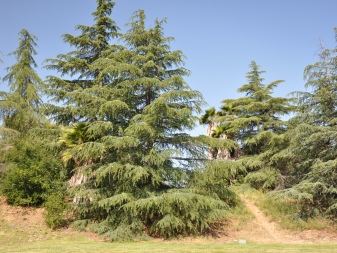
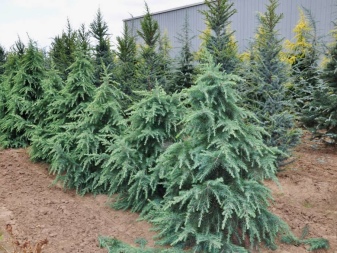
Description
The Himalayan cedar is also called deodar, it is one of the most spectacular representatives of the pine family. In its natural environment, this tree grows in Pakistan, India, Afghanistan, the center of Asia. In addition, it can be found in a number of European countries: Austria, Germany, Czech Republic. In the natural environment, this plant can survive for millennia. Despite its advanced age, cedar retains its beauty, luxury, and decorative properties.

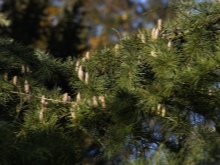
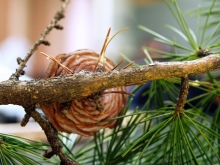
As a half-breed, that is, when mixed with pines, spruces, firs, oaks, this tree can be located high compared to sea level - up to 3500 m.
At the beginning of growth, the deodar grows very quickly, the rate is amazingly fast, but in the mature period the growth rate decreases. At the age of maturity, such a tree can reach 3 meters in girth, and 50 m in height. At a young age, the deodar has a slightly rounded top, with unexpressed tiers, the shape of which resembles a cone. At maturity, the cone becomes perfectly round.
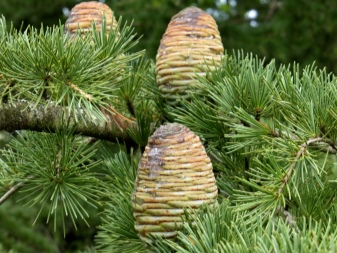
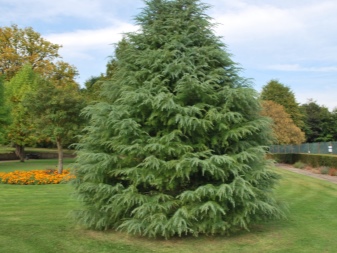
The external description looks like this:
- the location of the branches in relation to the trunk is about 90 degrees, and they go down to the ends;
- spiral needles are located singly and in bunches;
- the needles are strong, elastic, dense, with sharply marked edges;
- there is a small glossy finish;
- the color range of shades can vary from green to blue and silver.

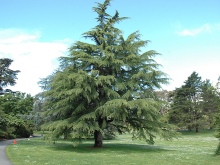
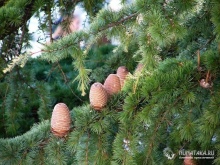
In the fall, male cones produce pollen, which is intended to fertilize female cones. Cones 1-2 are located at the very top of the crown at the ends of the branches.
The ends are facing the sun. The female cone has the following distinctive features:
- similar in shape to an elongated barrel;
- diameter up to 7 cm;
- length up to 13 cm;
- the color changes depending on the degree of ripening from blue to red, brown, terracotta;
- after a couple of years, the scales open slightly, and the seeds in a ripe state fall out.
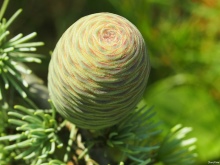
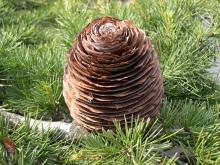
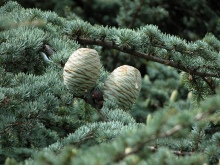
The deodar seed has its own characteristics:
- shape similar to an egg, elongated;
- whitish color;
- length reaches 17 mm;
- width 7 mm;
- there is a brownish wing with a shiny tint, which is why the seeds move so easily in space and overcome long distances before growing;
- these seeds are absolutely inedible in comparison with the Siberian cedar variety.
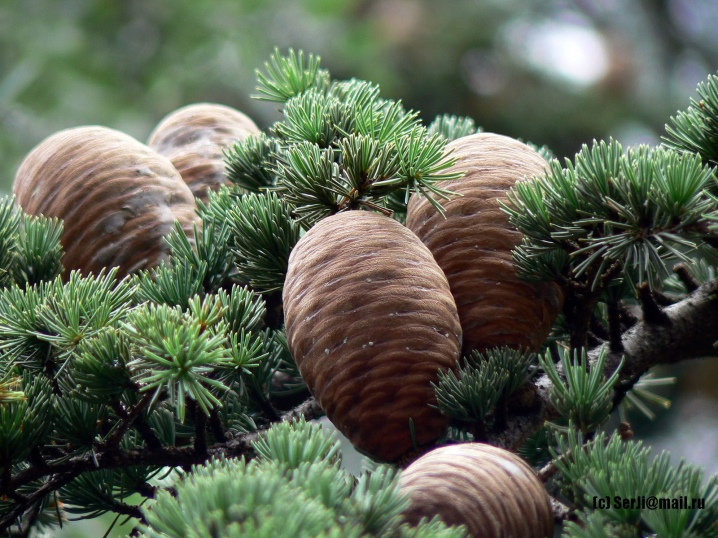
Overview of varieties
The natural form of cedar is found in its natural environment. Many varieties of this stunning ephedra are bred in the landscape. These varieties are bred artificially and are extremely in demand among gardeners:
- Argentea differs in luxurious bluish needles with silver;
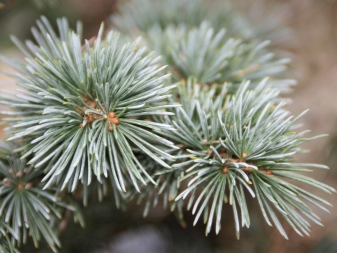
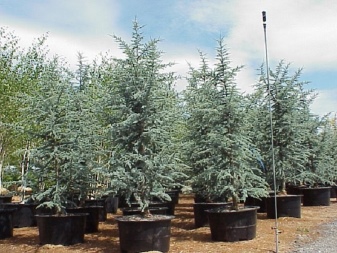
- Golden horizon (Golden Horizon) with a flatish crown, spreading type, the needles are green with a gray tint, the crown can be light green and even yellow with an excess of sunlight, the maximum height is 4.5 m;
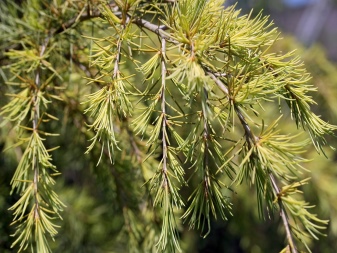
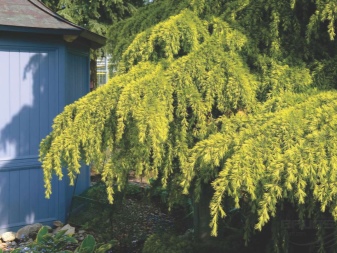
- Aurea has the shape of a crown of a conical type, is reduced in comparison with natural cedar, the needles have a yellow tint, by autumn they usually become darker;
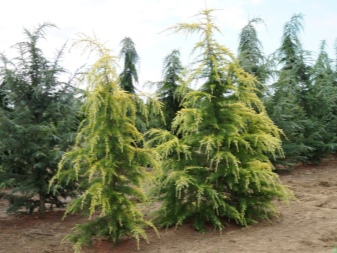
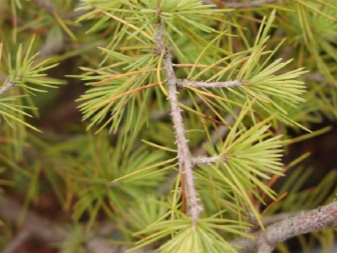
- Feelin blue ("Feeling blue") refers to dwarf cedars, maximum height 60 cm, needles of a bluish-gray shade, this variety is in great demand in the landscape;
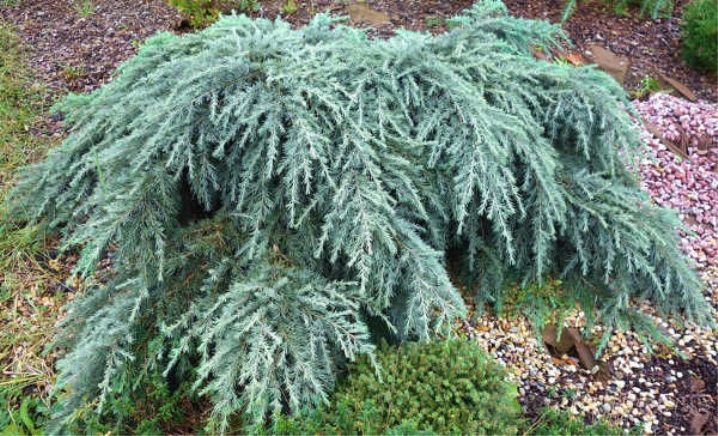
- Bush's electra it is distinguished by bluish needles, the branches are directed upwards, loves the shadow and develops well in it;
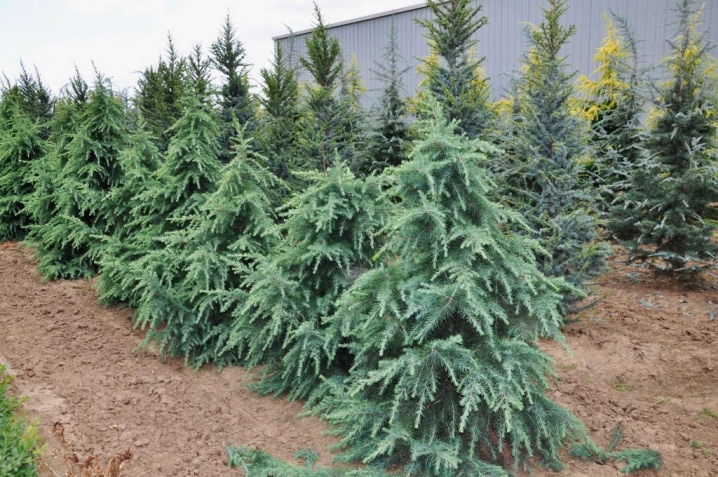
- Crystal falls with soft needles, it is thornless, bluish-green, the branches droop down in the form of weeping ones;
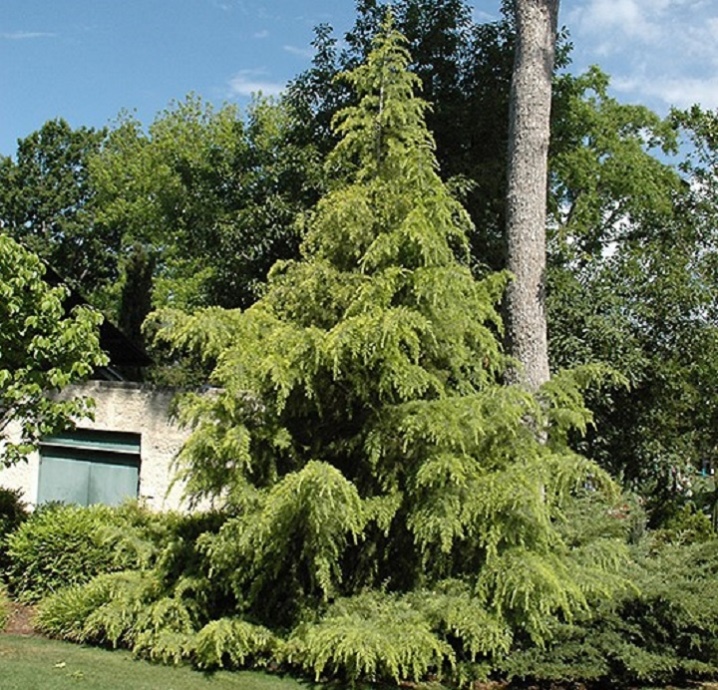
- Deep cove grows rather slowly, belongs to semi-dwarf cedars, young white needles, perfectly tolerate direct sunlight;
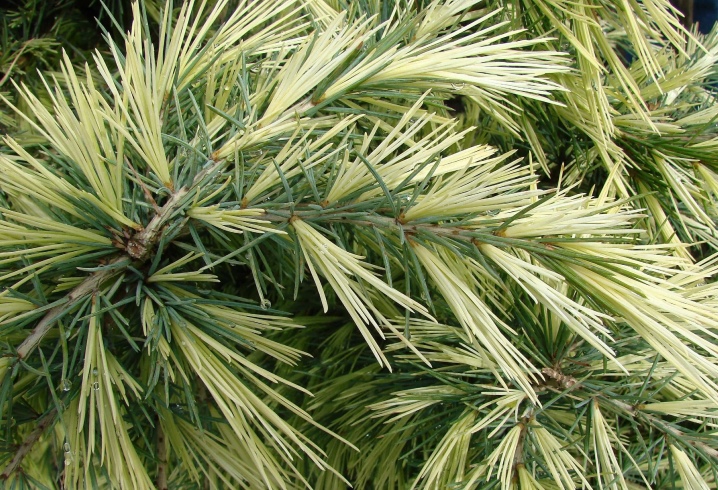
- Divinely blue has a narrow crown cone, bluish needles, does not grow too actively, reaches 2.5 m, tolerates frost well;

- Gold cone - pyramidal crown of a narrow type, the color of the needles is green with yellowness, growth is about 2 m, it grows extremely quickly;
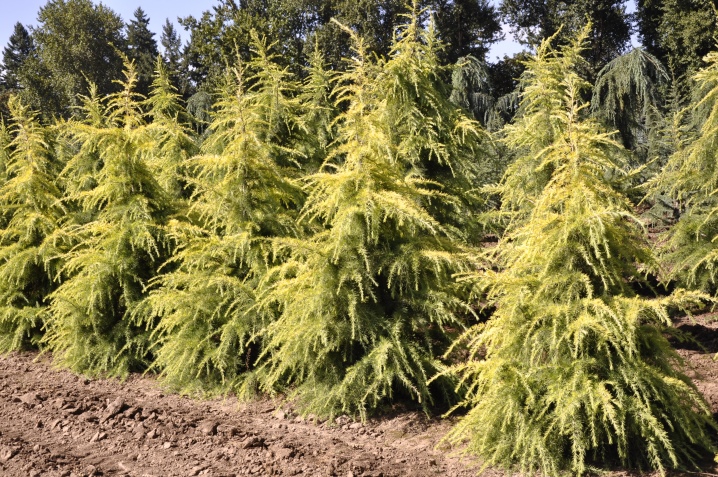
- Karl fuchs has a wide cone at the top, the color of the needles is blue, grows up to 110 meters, perfectly tolerates frosts up to 30 degrees;
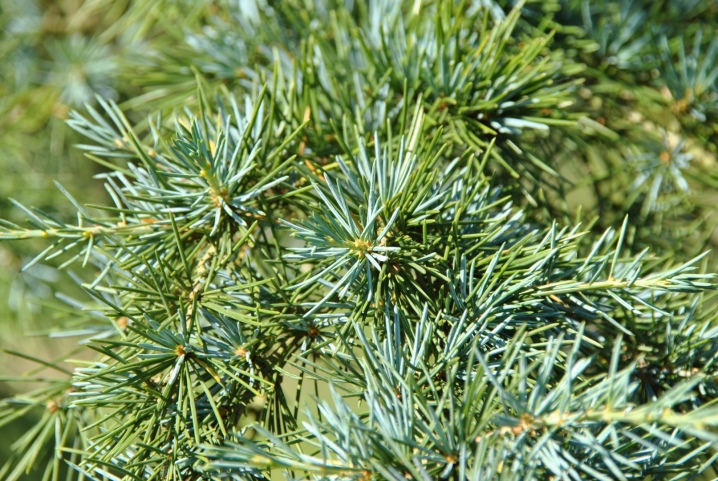
- Pendula - weeping species, green needles, falling to the ground, growing up to 8 m, loves shade;
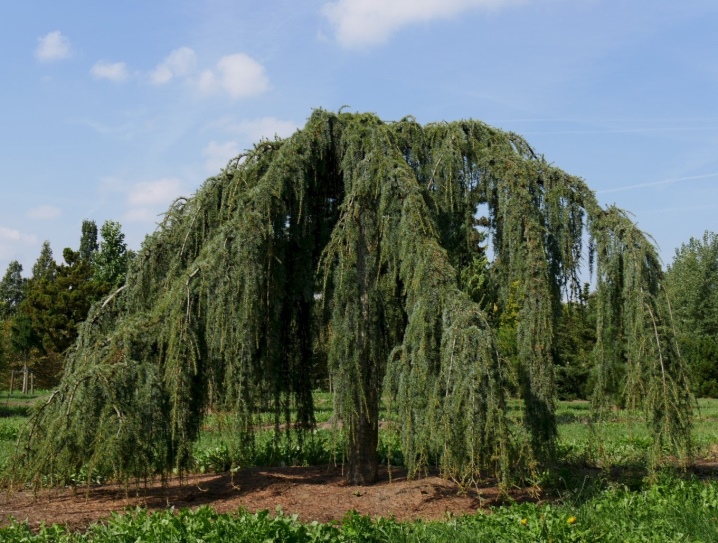
- Pygmy - a dwarf variety with a round top of the crown, the color of the needles is greenish-blue, grows up to 30 cm, in a girth of no more than 40 cm;
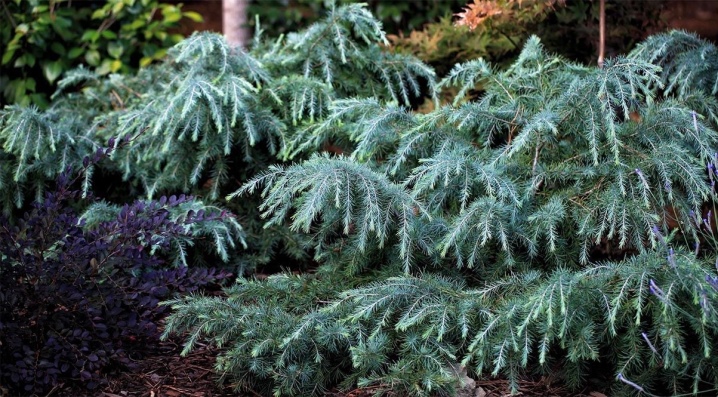
- Prostrate Beauty - grows horizontally, the needles are tender, green-blue;
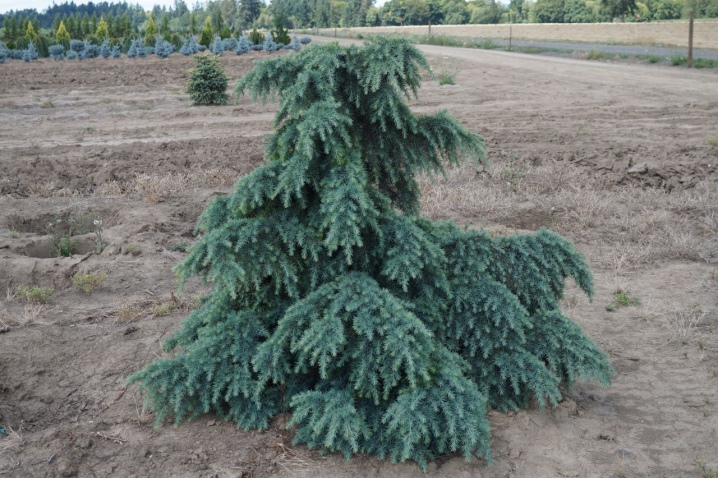
- Silver mist - dwarf variety, has white-silver needles of high decorativeness, grows up to 60 cm, in crown girth up to a meter;
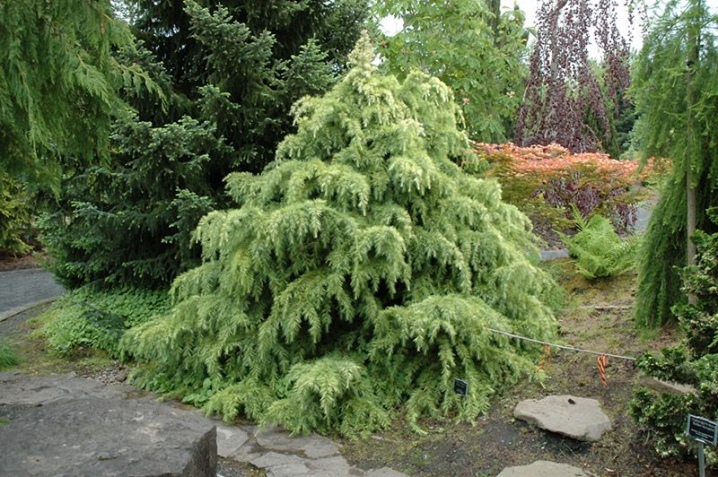
- Snow Sprite - the shape of the crown is conical, very dense, the needles are white.
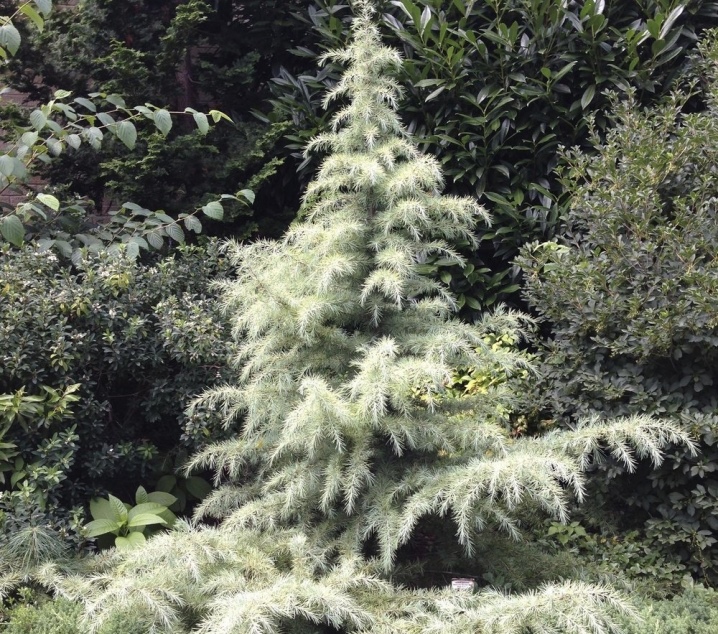
Most often on the plots you can find the Filling Blue variety, as this variety perfectly tolerates frost and drought. In general, it is unpretentious and takes root in almost any climatic conditions.
Landing features
Deodar, due to its unpretentiousness and monumentality, began to be actively planted back in the 19th century, most often in botanical gardens. Now the Himalayan cedar is widespread in the southern area of our country and is a common plant in parks and squares. Breeding work made it possible to breed frost-resistant varieties. There are planting features that must be taken into account, it is they that ensure the development and growth of a healthy plant and are close to the natural environment:
- a warm, temperate and mild climate is preferable;
- it must be watered abundantly, regularly;
- optimal air is warm and humid.

It is necessary to prepare the site and seedlings, the latter are ready for planting at the age of three. Greenhouse young cedars need good hardening before planting in open ground.
To do this, it is periodically necessary to take the plant out into the air. You need to choose a place for the tree with sufficient lighting and a little shade. The composition of the soil is not fundamental, since the tree is unpretentious, but light drained loam without close groundwater is considered optimal.
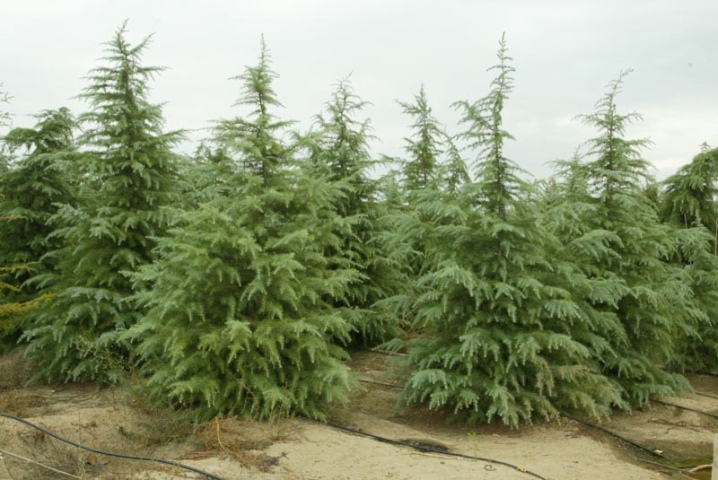
In order for the plant to develop well and grow healthy, it is necessary to follow the planting rules:
- the pit is formed about a month before disembarkation;
- digging the soil around the pit is necessary;
- the deepening should exceed the size of the seedling earth clod by half;
- earth, manure, peat, wood-type ash, sand are combined, the mixture is left in the pit until it settles;
- you cannot plant cedar at a distance of less than 3 meters from nearby trees;
- planting is carried out in the spring, when the buds on the trees are not yet blooming;
- you can plant a cedar in the fall, after the foliage has been dropped from the trees;
- when planting, care must be taken, a seedling is placed in the pit at an angle, there it is necessary to straighten tangled roots;
- you need a powder in the form of a nutrient-type soil, after which the plant is compacted, watered, mulched;
- the fluffy side is placed in the south direction.
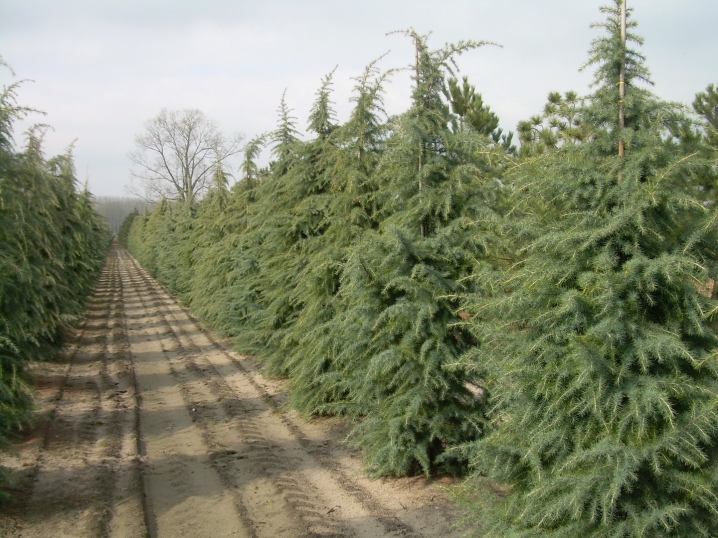
If you have purchased a well-developed 8 or 9 year old seedling in the nursery, it should be planted in winter, as the roots are closed.
Care Tips
Growing a Himalayan cedar is not particularly difficult, but you need to know the basic rules and features of care. It can be planted both in the south and in the Moscow region, frost-resistant varieties will take root even in Siberia. Watering is done so as not to allow the soil to dry out in summer. At the same time, it is necessary to ensure that the water does not stagnate. The cedar is fertilized for the first time in the season in April, then twice more - in July and August. Top dressing is carried out with mineral fertilizers with nitrogen in August, with phosphorus and potassium in July.
From time to time it is necessary to loosen the area of the soil around the cedar, weed. You should not plant both perennials and annuals next to herbs, since the grass is able to take away the necessary substances from the deodar.
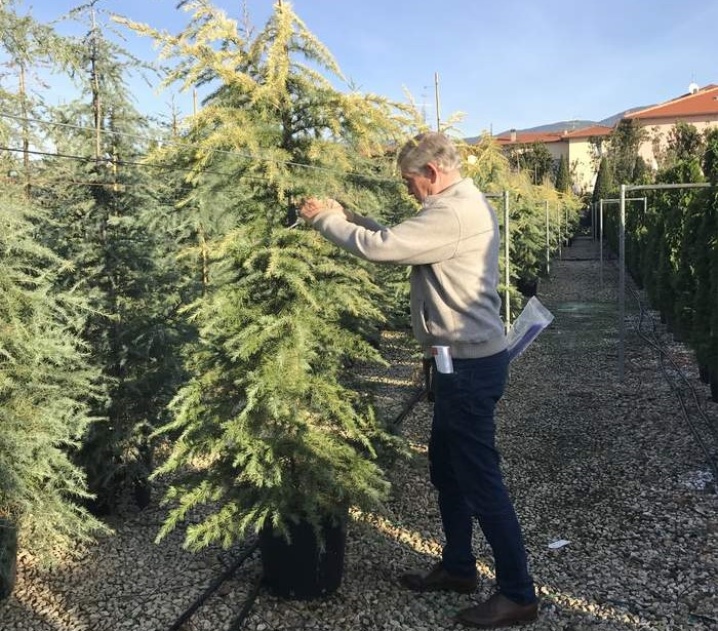
Cedar is mulched with a bedding from the forest from under hazel, alder, birch. Compost, peat, sawdust are also suitable for this purpose. Every spring, the mulch needs to be removed and renewed.
As for pruning, in the garden it is necessary to do this only by freeing the tree from dry and unhealthy branches. It is best to do this in the spring, before the shoots appear. More aggressive pruning for shaping is done in the fall. It is very important to prepare the tree for wintering, especially in temperate latitudes, and not in the south. You should prepare for winter ahead of time, adhering to the following rules:
- from August, feeding stops so that the shoots do not grow, otherwise they will freeze;
- in cold regions, deodar is watered a lot in the fall to create a supply of water: if this is not done, in spring the cedar will begin to dry out.
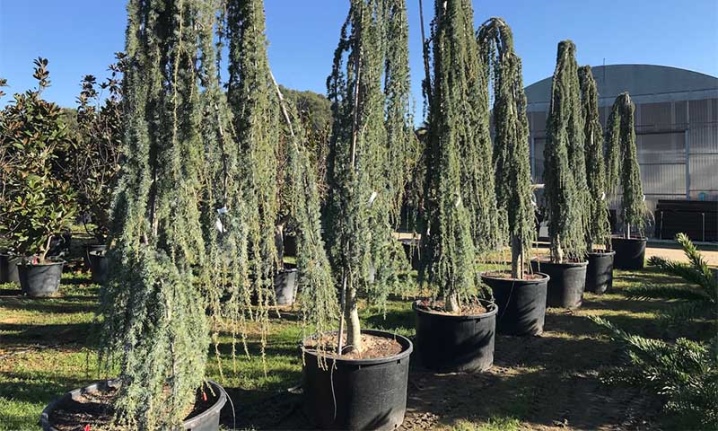
In cold weather, the following rules should be observed:
- as soon as the temperature reaches zero, the cedar is sheltered from the cold, the space near the trunk is insulated with sawdust and covered with spruce branches;
- the branches are connected and tied with twine, otherwise they will break off under heavy snow;
- young trees with fragile roots are fixed with stretch marks;
- the optimal material for sheltering trees is burlap;
- you can build a stronger shelter like a house or a hut;
- you cannot cover the tree with non-woven materials for the winter, otherwise it may rot closer to spring;
- it is forbidden to hide the crown of a cedar, since even in winter light is needed to produce chlorophyll.
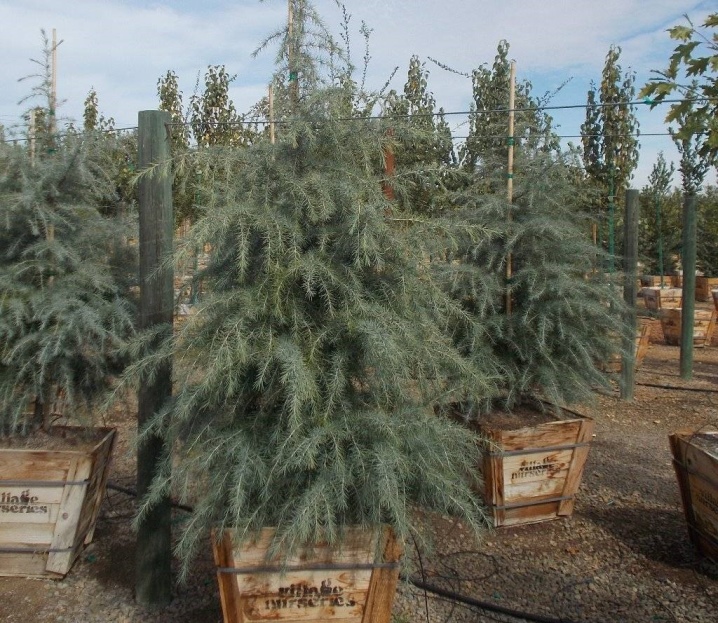
Reproduction
Under natural conditions, the Himalayan cedar reproduces by self-sowing method, it can also be removed by grafting. Most often it is bred with seeds, since this process does not need stratification, you can lower the seeds in water for several days and get a soaked sprout.
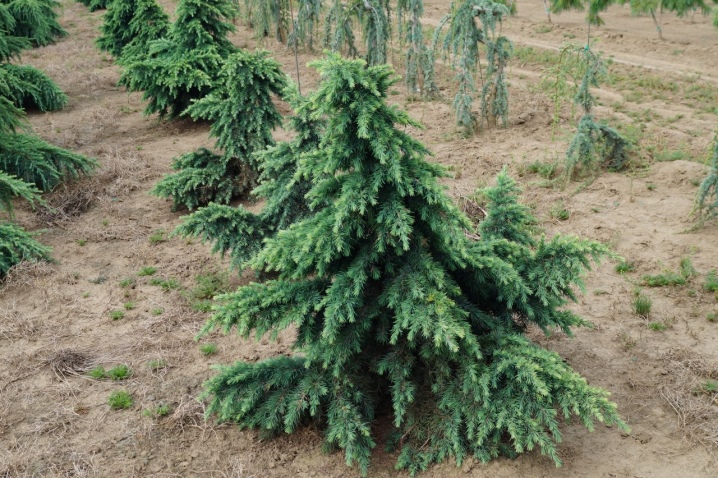
In addition, the seeds germinate in moist sand in a cold place.
The seeds are sown in peat with sand, covered with polyethylene and remain at room temperature; in greenhouses, the growing process takes up to three years. It is necessary to provide:
- sufficient level of lighting;
- regular watering;
- access to fresh air every day;
- temperature regime from + 10 to 25 degrees;
- cutting the crown.

Diseases and pests
The Himalayan cedar can be affected by various types of ailments. Most often he gets sick:
- rust, resin crayfish;
- brown central, prismatic rot;
- white root rot;
- chlorosis.
Most of the diseases are associated with various fungi. To cure the plant, it is necessary to treat it with a diluted Bordeaux liquid; a systemic fungicide is also suitable. All infected areas are removed and destroyed.
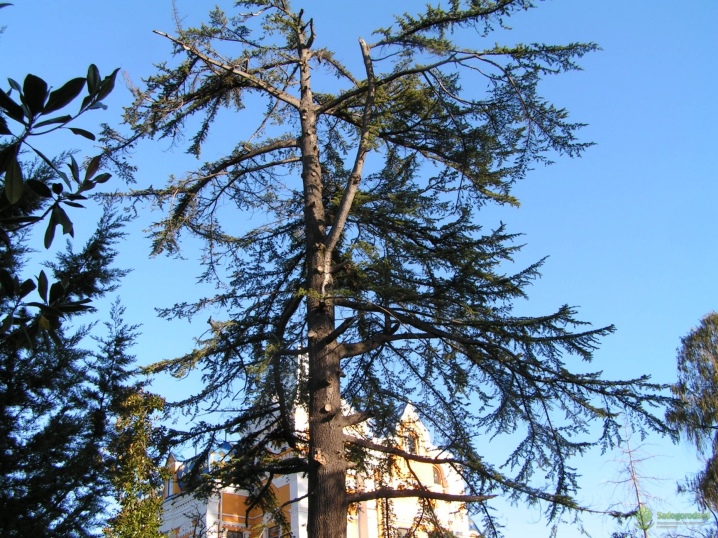
Chlorosis occurs due to the high content of lime in the soil, so you need to water the cedar with an acidified liquid. It is also necessary to mulch the circle near the trunk with needles, peat.
You should not plant a cedar near the bushes of gooseberries, currants, as they are susceptible to a fungus that causes resin cancer. As for pests, you should be wary of the following varieties:
- pine hermes;
- pine aphids;
- an ordinary engraver;
- pine moth;
- scabbard ordinary.
If you notice insect infestation on the tree, you need to purchase a systemic type insecticide. It is used strictly in accordance with the instructions.
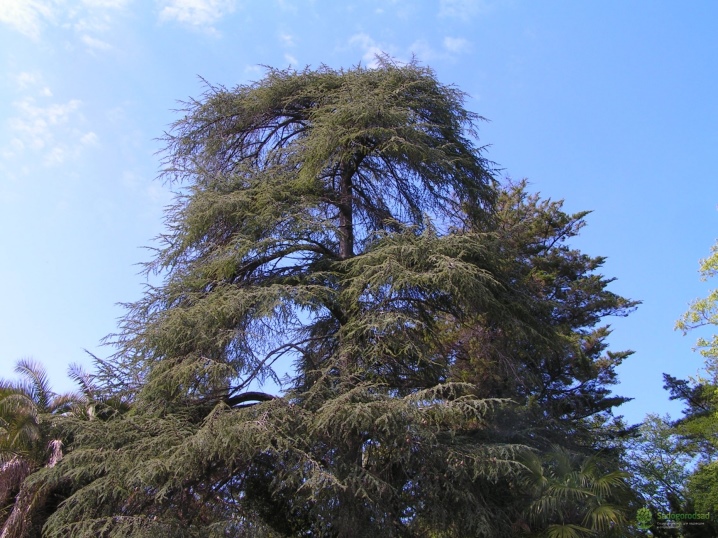
Examples in landscape design
The Himalayan cedar is often used not only as a decoration for a garden plot, but also urban landscaping, especially in the southern regions of the country.
- Dwarf varieties are most often planted in private plots.
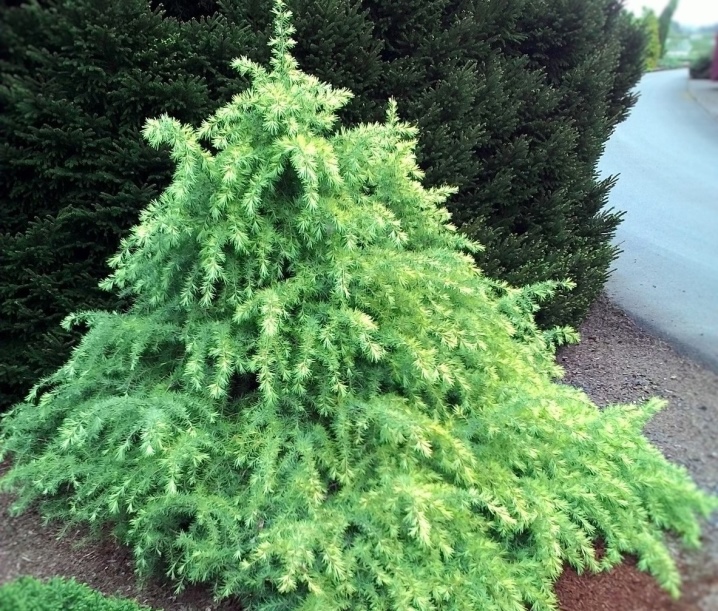
- The luxurious needles of an overgrown tree will decorate any garden.
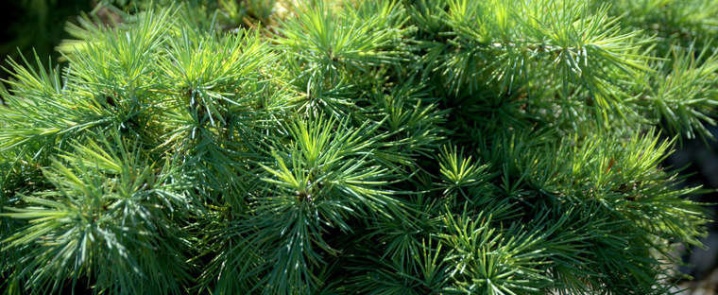
- This tree can even be grown in tubs.
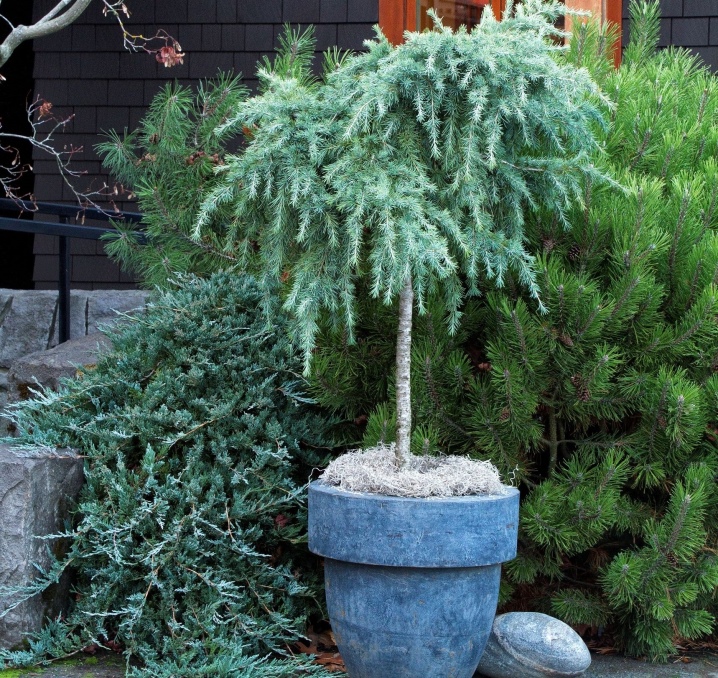
- There are a lot of possibilities for decorative planting of luxurious needles.
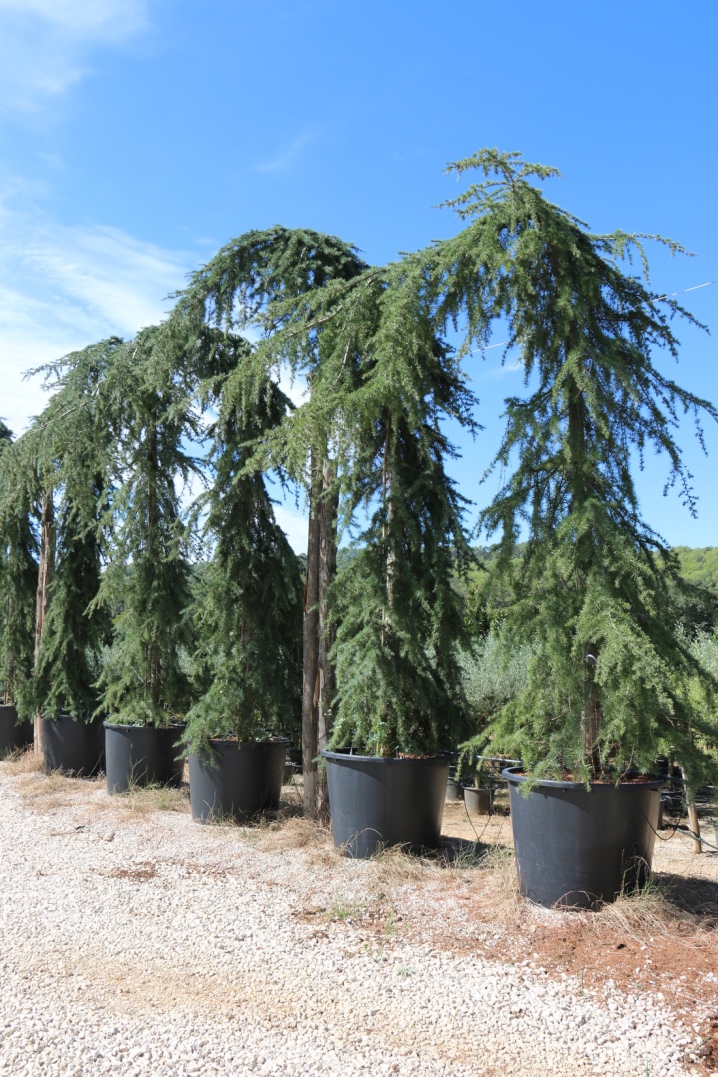
- The overgrown tree looks simply luxurious and strikes with its splendor.
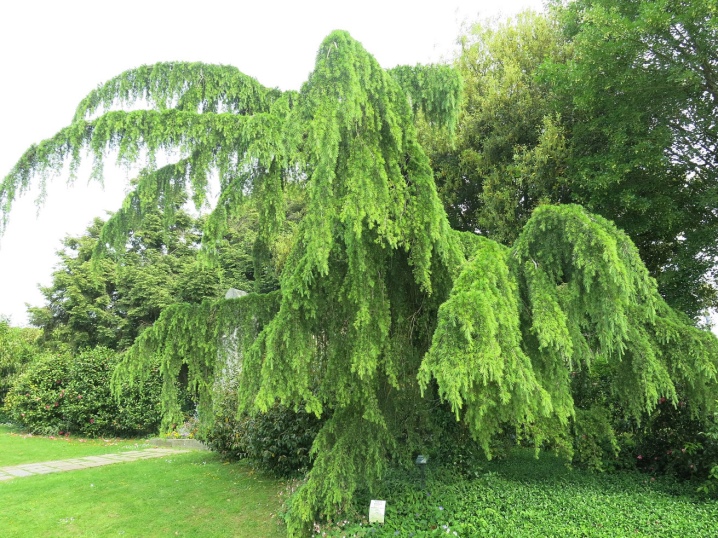
- Conifers always fit perfectly into the design of the site.
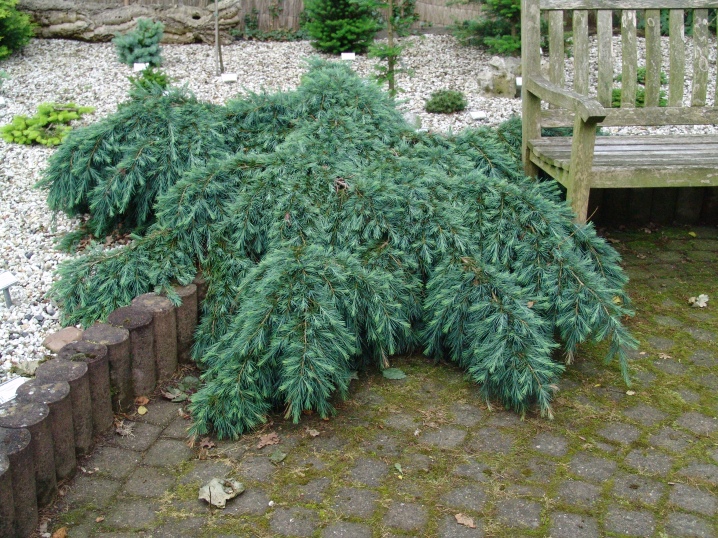
For more information about the Himalayan cedar, see below.



































































The comment was sent successfully.